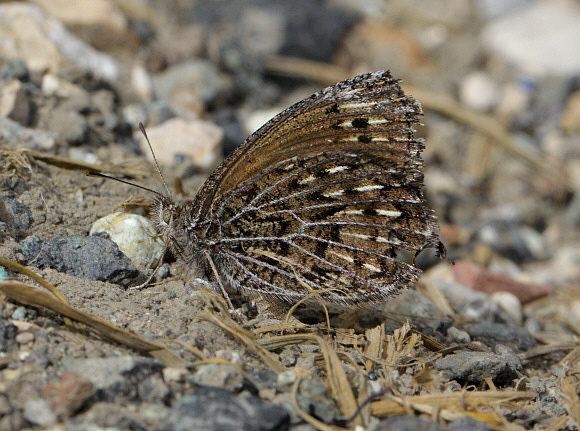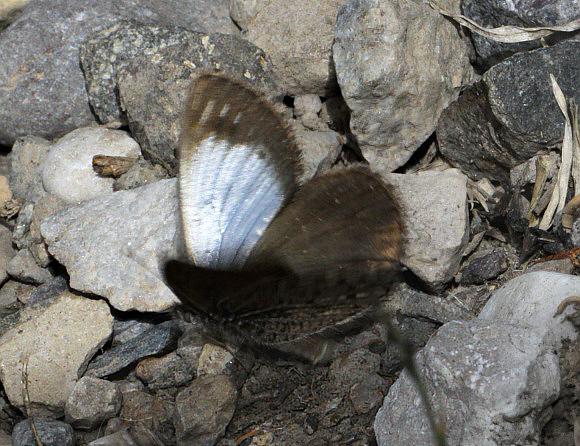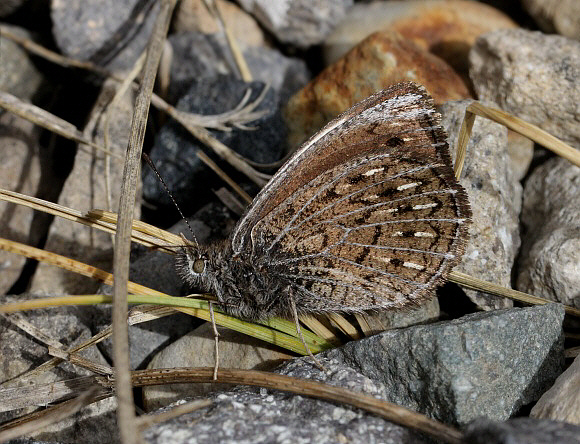
Introduction
There are 1100 known species of Satyrinae in the neotropical region. About 570 of these are placed in the subtribe Pronophilina – a diverse group of high altitude butterflies, all of which are confined to the neotropics. The vast majority are endemic to the eastern Andes, but 4 species are found in the Atlantic cloudforests of Brazil, and a further 6 species occur in Central America. Additionally there is one genus Calisto which is endemic to the Caribbean islands of Cuba and Hispaniola.
Punargentus lamna is an unusual species with an underside reminiscent of the Alpine Graylings of Europe. The genus Punargentus comprises of just 2 species, lamna and angusta. They are closely related to Argyrophorus. Both genera are characterised by having large areas of metallic silver scaling on the uppersides, and cryptically patterned undersides.
Punargentus lamna occurs in the eastern Andes of southern Peru and Bolivia.
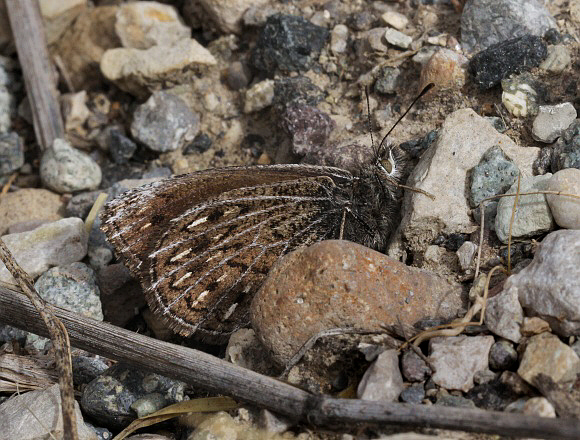
Habitats
This is an Andean species, found at elevations between about 2500-4000m in rocky habitats in the puna / cloudforest transition zone and on arid high altitude plateaux.
Lifecycle
Individual females switch between different forms of egg-laying behaviour according to the micro-habitat and substrate encountered. If a female settles on stony ground she probes about with her abdomen until she locates a crevice between small stones, where she deposits a single egg. On the other hand if she settles on loose dry soil she uses the tip of her abdomen to drill into the soil, and to repeatedly flick away loose particles until she has excavated a tiny cavity in which to place her egg. Often the breeding habitat includes both types of substrate, and a given female will alternate between each type of oviposition method. The eggs are whitish and globular.
I have no data regarding the larva or foodplants, but it is likely that the young larvae feed on fine young grasses, while the older larvae probably move on to feed on coarser grasses. Most other Pronophilina feed on bamboo (Chusquea) but that is clearly not the case with Punargentus and related genera which inhabit arid plateaux.
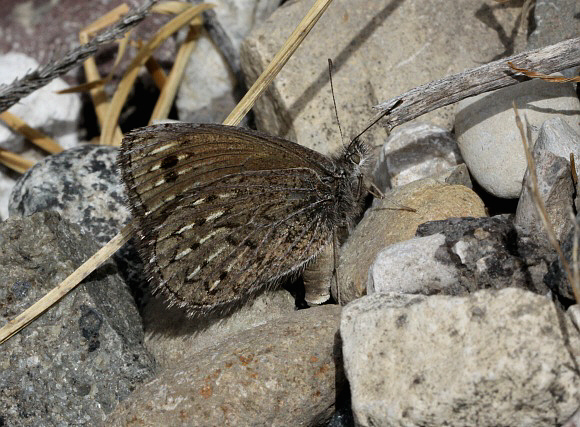
Adult behaviour
The dorsal fore-wings are silvery and highly reflective, which makes the butterflies conspicuous in flight, and probably aids mate location. The conspicuous appearance probably attracts the attention of predatory dragonflies and insectivorous birds, but Punargentus elude capture by only undertaking very short flights, and by taking advantage of their cryptic underside wing pattern which provides excellent camouflage once they have settled and closed their wings.
The butterflies spend long periods settled motionless on stony ground, but if disturbed they instantly take flight, flying rapidly and erratically low over the ground before quickly resettling a few metres distant. On hot sunny afternoons males sometimes settle at the edge of streams or seepages to imbibe moisture. Both sexes nectar avidly at low growing yellow Compositae, and always keep their wings erect while feeding.
